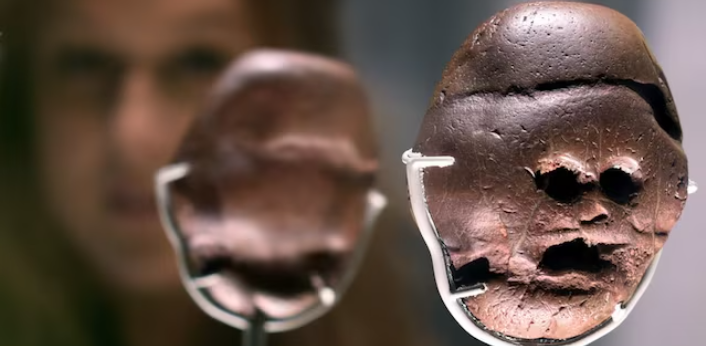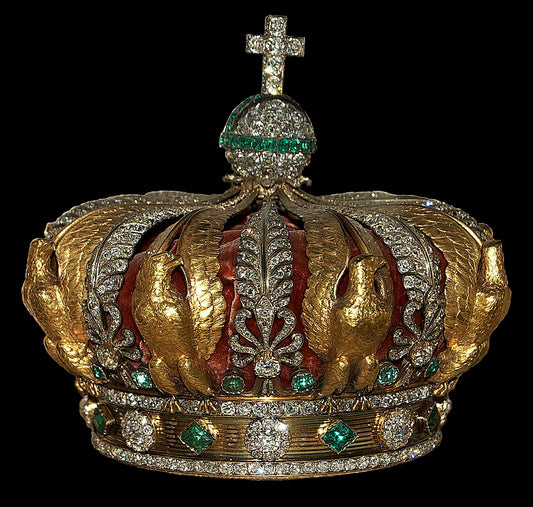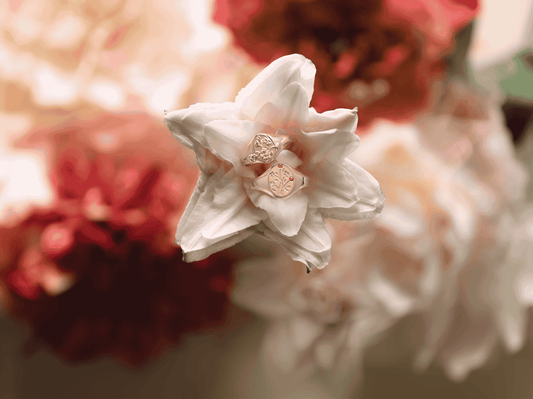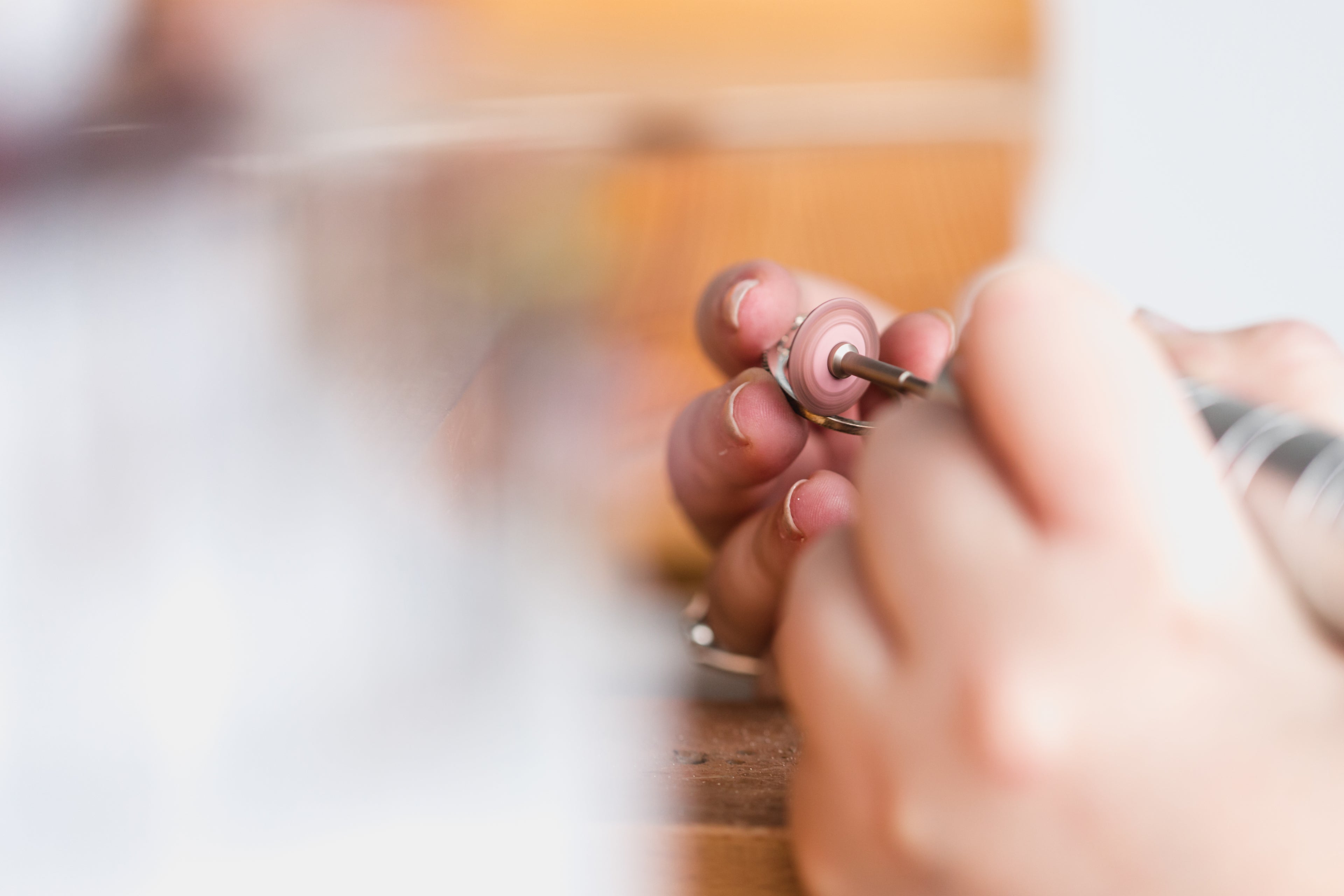Listen to the Summary:
The Universal Human Gesture
Long before cities, before farming, before writing, there was a hand reaching down to pick up a stone.
Not a tool. Not a weapon. Just a stone — beautiful, colorful, or strange.
It was carried, cradled, treasured.
Archaeologists call these objects manuports — naturally beautiful stones or fossils carried away from their origins by early humans. They weren’t tools. They weren’t necessities. They were chosen because they stirred something inside.
This simple act — recognizing beauty, deciding it mattered enough to carry — may be the oldest story humanity ever told.
Jewelry is simply the portable version of this instinct. A memory made wearable. A belief made tangible.
Rocks on the Move: The Oldest Story
Some manuports traveled hundreds of miles from where they were found.
The Makapansgat Pebble, for example — a stone naturally shaped like a human face, carried to a cave in South Africa nearly three million years ago — predates not just art, but possibly language itself.
Before agriculture, before architecture, humans carried beauty.
The first trade routes were not built for wheat or weapons alone. They also moved objects of beauty: shells, stones, pigments, beads. Meaning traveled hand to hand, heart to heart.
Adornment wasn’t a luxury added after survival. It was braided into survival. It was how we marked identity, memory, belonging. The more beauty an object had, the rarer it was, the more valuable it became.
Trade Routes: The First Information Highways
Trade routes carried more than goods. They carried knowledge, technology, religion, language.
A shell necklace moving along a river trail might carry with it:
- A new technique for knotting string
- A new pigment to dye textiles]
- A new belief about the spirit world
- Information about the harvest and how to increase yields
The Silk Road didn’t just move spices and silk — it moved ideas, philosophies, entire ways of seeing the world.
Humanity’s first information highways were built out of desire: the desire to share, to carry, to connect.
Beauty as Catalyst: Jewelry and Metallurgy
While we can’t say jewelry was the sole driver of metallurgy, it undeniably helped accelerate it.
The need to set stones securely, to shape precious metals finely, to adorn the body in ways that lasted — all pushed early metalsmiths to experiment with alloys and techniques.
The quest for beauty led to better smelting. The quest for beauty led to stronger metals. The quest for beauty helped pave the road to steel, to industry, to the modern world.
Beauty wasn’t a byproduct of civilization. It was its engine.
We still see this quest for innovation echoed in workshops today. Jewelers are at the leading edge of technology with 3D printing, laser scanning and etching, and the development of new and stronger materials. They are constant champions of human rights and climate ethics, conservation efforts, and the battle to maintain our natural resources. Through trade, we practice the soft power of diplomacy on a daily basis. Jewelers and the pieces we make have always been at the forefront of the information revolution.
The Etruscans: Masters of Meaning
The Etruscans are a perfect example of this ancient truth.
Their jewelry — delicate granulation, filigree, breathtakingly intricate designs — wasn’t born from necessity. It was born from a reverence for beauty.
They didn’t separate craft from art, or utility from meaning. Their goldsmiths honored life’s great moments — birth, marriage, death — by weaving meaning into every tiny bead of gold.
To the Etruscans, beauty wasn’t frivolous. It was a form of prayer.
When we create and wear jewelry today, we’re touching the same impulse.
Unconnected Civilizations, Shared Desire
Across the globe, civilizations that never met still found their way to jewelry:
- Indus Valley artisans with their intricate beadwork
- Incan goldsmiths crafting elaborate ear spools
- West African smiths forging gold and bronze into symbols of power
- Native American artisans shaping turquoise and shell into talismans of memory
No trade routes connected them. No shared teachers.
The desire was simply there. Already humming in the human heart.
Adornment is universal. Because belonging, memory, and beauty are universal.
The First Written Complaint: Materials Matter
One of the earliest known written records is not a poem or a prayer.
That’s right–the very first Yelp review was a complaint about the quality of jewelry supplies.
The Complaint Tablet to Ea-Nasir, written around 1750 BCE, is a letter from a merchant furious about receiving substandard copper.
"You treated me with contempt," he writes, demanding better materials.
Even at the dawn of writing, humans were obsessed with the integrity of what they traded and wore.
Jewelry — and the materials that make it — were serious business. They shaped trade. Law. Language.
Desire: The Spark That Still Burns
After survival, it wasn’t necessity that shaped the world. It was desire.
The desire to carry a smooth stone across mountains. The desire to weave shells into a skirt that whispered with every step. The desire to mark a body, a life, a love.
From that desire came trade routes. From that desire came metallurgy. From that desire came everything that made survival worth more than survival.
Survival taught us how to live. Desire taught us why.
But desire doesn’t just connect us to beauty—it also reshapes the world.
Jewelry as Quiet Revolution
Adornment is not only emotional—it’s powerful. In expressing beauty, memory, or identity through jewelry, we’re also making a quietly revolutionary act.
Desire has driven change in every corner of human history—from the pursuit of metals to the construction of empires. When channeled positively, it becomes vision, innovation, connection. But even uncontrolled, it reshapes civilizations. Greed, after all, is simply desire without containment.
To wear something because it speaks to you, because it holds meaning or reflects who you are, is not frivolous—it’s radical. Especially when you consider that, for most of human history, survival depended on the collective. Individual expression wasn’t always possible. So the moment we started adorning ourselves—not just for the tribe, but for ourselves—we changed something fundamental.
We made room for personal identity. For meaning not just in function, but in feeling. We said, "The individual matters. My story matters."
Jewelry still carries that power. Every time you put on a meaningful piece, you’re quietly stating your place in history, in humanity, in the ongoing revolution of selfhood.
The Stone in Your Hand
When we wear jewelry today, we’re not just making a fashion choice.
We’re reenacting an ancient impulse:
- To carry meaning with us.
- To mark who we are.
- To remember.
Jewelry is Stonehenge you can wear. It’s the pyramids shrunk down to fit in your palm.
The stone you carry today is part of a story tens of thousands of years old — and still unfolding, with every hand that reaches, every heart that remembers.
Today when you choose a piece of jewelry to wear, you’re participating in a tradition that extends to before history was recorded. You’re engaging with beauty and desire in the same way that eons of humanity have before you. There’s something astonishing about being together in this appreciation for the unique and special. We all can partake in this human experience in our own small ways, connecting a thread across time to the beautiful, sparkling pebbles we wear near our skin.
Maybe the question isn’t just, “Why rocks?”
Maybe it’s, “What do you carry—and why?”





